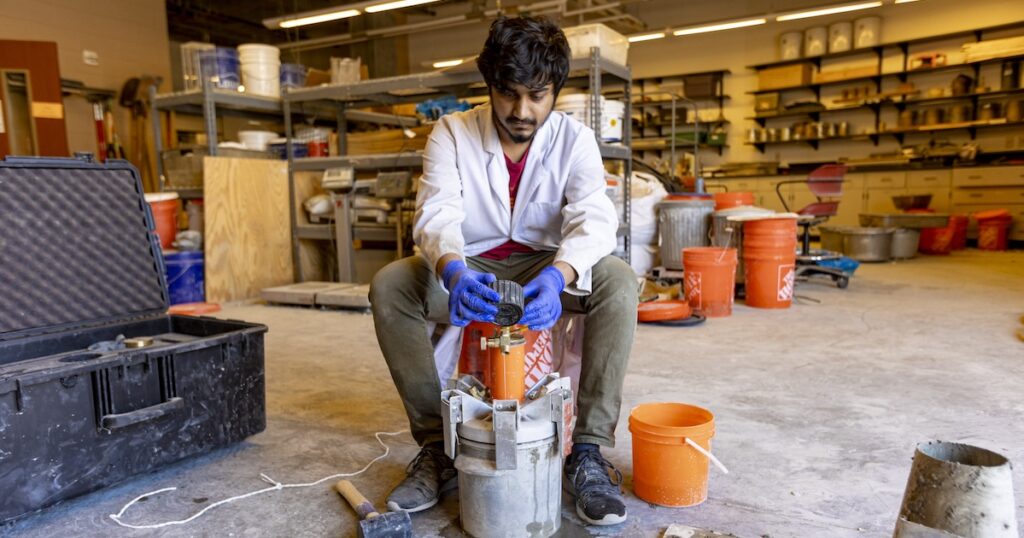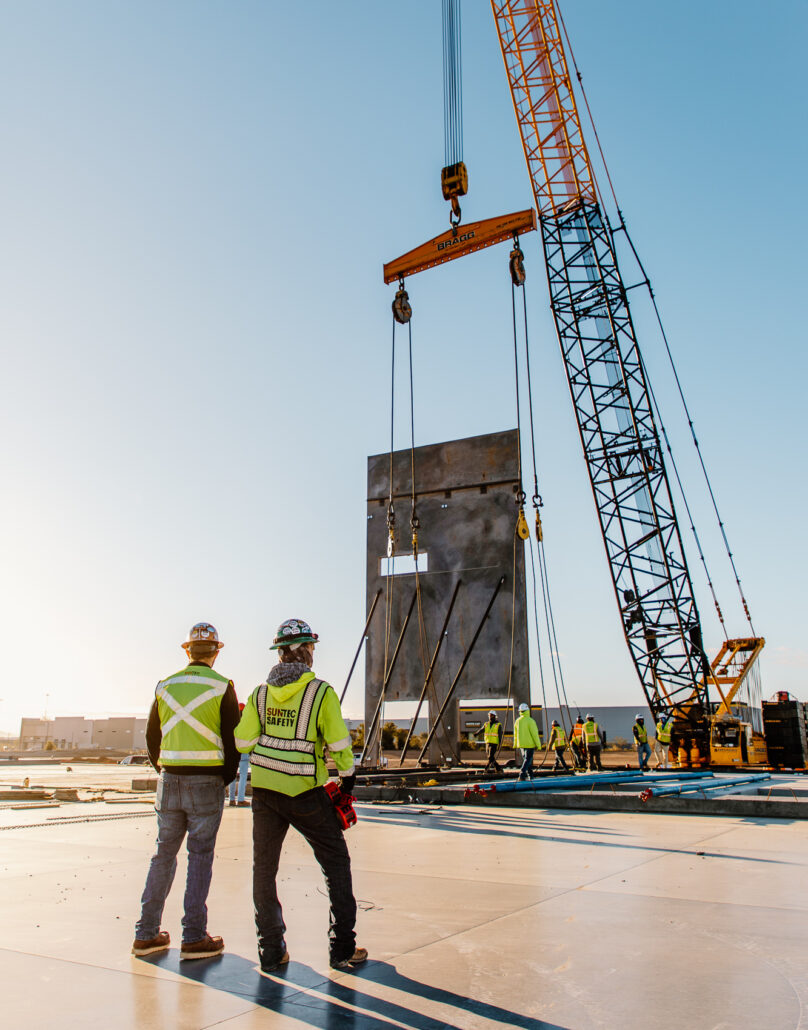The Crucial Role of Concrete Foundation in Structural Stability and Long Life
When it involves constructing a property, the foundation is much more important than you might believe. Concrete foundations provide unmatched toughness and durability, ensuring your framework can endure various environmental obstacles. Without a solid base, you take the chance of possible issues like moving or fracturing, which can endanger security and worth. Understanding the subtleties of concrete structures might be the key to maintaining your investment for years to find. What should you think about following?
Understanding the Importance of Concrete Foundations
Concrete structures are important to the overall security of any type of structure, as they provide the necessary assistance needed to hold up against different loads and ecological conditions. When you consider developing a home or a business area, the foundation is the initial thing you need to think about. It serves as an obstacle versus moisture, securing your building from water damage. A well-placed concrete structure also protects against settling and moving, which can lead to fractures in walls and floorings. You'll want to ensure that the foundation is appropriately designed and strengthened, as this affects the longevity of your structure. Additionally, a strong foundation can improve power efficiency by reducing air leakages. Remember, ignoring the importance of a concrete foundation can bring about costly repair services down the line. Spending in a top quality foundation upfront is vital for the honesty and durability of your structure.
Advantages of Concrete Foundations for Structural Stability
While several elements add to a structure's structural integrity, concrete structures supply unmatched sturdiness and strength. You'll appreciate that concrete can stand up to extreme climate condition, withstanding both dampness and temperature level fluctuations. This durability indicates your framework is much less most likely to experience cracking or shifting over time, which can compromise its safety.Additionally, concrete's fundamental weight offers a solid base, avoiding motion throughout all-natural occasions like quakes or floodings. When you select a concrete structure, you're additionally choosing reduced upkeep; unlike timber, it will not rot or bring in parasites, conserving you money and time in repairs.Moreover, concrete's fire resistance supplies included security, guaranteeing your structure can endure high temperature levels without substantial damages. Overall, buying a concrete foundation means you're prioritizing the lasting security and honesty of your structure, making it a smart choice for any type of construction project.
Common Kinds of Concrete Foundations
When it pertains to building structures, understanding the common sorts of concrete foundations can aid you make informed choices for your task. One of the most prevalent kinds consist of slab-on-grade, crawl area, and full basement foundations.A slab-on-grade structure is a straightforward, cost-effective alternative, where a thick concrete slab is poured straight on the ground. This kind works well in warm environments, as it lessens warmth loss.Crawl area foundations raise the home slightly over ground, enabling for air flow and access to pipes and electrical systems. This layout can aid stop moisture issues.Full basement structures provide additional living or storage room while supplying outstanding architectural assistance. They require even more excavation and are normally utilized in cooler climates to avoid frost heave.
Aspects to Consider When Designing a Concrete Structure

Ideal Practices for Putting Up Concrete Foundations
When you're setting up a concrete structure, appropriate site prep work is necessary to assure stability (West Coast GE Concrete contractors). You'll likewise need to comprehend reinforcement methods to boost strength and sturdiness. Do not overlook the treating procedure, as it plays an essential duty in achieving a strong structure.
Site Prep Work Importance
Although it may seem straightforward, appropriate website prep work is crucial for assuring a solid and durable concrete foundation. Beginning by removing the area of any particles, plants, or natural material that might compromise the foundation's honesty. Next, assess the dirt kind and compaction; you might need to dig deep into or include products to produce a stable base. Degree the ground to ensure even weight distribution and stay clear of working out concerns later on. Installing proper drain systems is also important to protect against water accumulation, which can deteriorate the structure gradually. Ultimately, define the structure's measurements properly to assist the pouring process. By adhering to these steps, you'll establish the stage for an effective concrete foundation that stands the examination of time.
Reinforcement Strategies Discussed
Once the website is appropriately prepared, the next action in assuring a durable concrete foundation entails executing effective support methods. You should begin by using steel rebar, which provides tensile stamina and helps protect against splitting. Lay the rebar in a grid pattern, ensuring it rises utilizing spacers to keep appropriate protection. In addition, consider utilizing cord mesh for extra support, specifically in areas based on heavy tons. Do not fail to remember to tie the rebar intersections securely with cord. For larger structures, fiber reinforcement can improve durability, minimizing the risk of shrinking splits. Always comply with neighborhood building ordinance and standards to guarantee compliance. By applying these reinforcement techniques, you'll significantly increase your foundation's stamina and durability, laying a strong foundation for your framework.
Treating Process Fundamentals
To assure your concrete structure treatments properly, it is essential to preserve appropriate dampness and temperature level problems immediately after pouring. Begin by covering the surface with a wet cloth or plastic sheeting to maintain dampness. This maintains the concrete moisturized, avoiding fractures and making sure toughness. You should also keep track of the temperature level; excellent healing conditions are between 50 ° F and 90 ° F. If it's too hot, mist the surface area on a regular basis to avoid fast evaporation. For winter, take into consideration making use of shielding coverings to keep heat. Go for a curing period of at the very least seven days, as this is vital for optimal strength development. By following these best practices, you'll enhance your structure's resilience and long life, making sure structural honesty for many years to find.
Maintenance of Concrete Foundations for Long Life
To maintain your concrete structure strong and long lasting, regular inspections are essential. You should additionally assure efficient drain services are in area to avoid water damage. If you identify any kind of splits, resolving them without delay will conserve you from bigger troubles down the line.

Normal Evaluations and Evaluations
While normal evaluations and analyses could look like a duty, they're essential for preserving the stability of your concrete structure. By regularly inspecting for fractures, have a peek at these guys shifts, or signs of wear, you can catch potential issues prior to they rise right into expensive repair services. Try to find any type of water pooling around the foundation or unusual settling, as these can signify underlying troubles. It's likewise smart to keep track of any changes in your home's structure, like doors that stick or windows that don't open smoothly. Keeping a record of your assessments assists track adjustments with time, enabling proactive maintenance. Ultimately, these assessments guarantee your foundation remains stable, supporting the longevity and safety of your entire structure. Don't forget this essential element of homeownership!
Effective Water Drainage Solutions
Routine evaluations can reveal issues like drainage problems that could endanger your concrete structure's security. To stop water build-up, ensure your gutters and downspouts direct water far from the structure. Installing French drains can properly redirect surface area and groundwater, reducing stress on your foundation wall surfaces. Additionally, rating the dirt around your home assists assure that water streams away, as opposed to pooling near your foundation.Consider making use of sump pumps in locations susceptible to flooding, as they actively get rid of excess water. Consistently look for blockages in drainage systems and clear them without delay. You'll shield your foundation's integrity and long life by taking these positive steps. Bear in mind, efficient drainage remedies are necessary for preserving a strong, long lasting concrete foundation.
Motivate Fracture Repairs
When you see fractures in your concrete structure, addressing them without delay is important for keeping its long life. Tiny splits can promptly advance right into bigger concerns, jeopardizing the structural honesty of your home. Consistently evaluate your structure for indicators of damage, such as straight or vertical cracks. If you spot any, don't wait-- fix them right away. You can make use of epoxy injections or concrete patching compounds, which work for sealing fractures. Always comply with the manufacturer's directions and consider speaking with an expert for considerable damage. Remember, timely fixings not only improve your structure's durability however additionally save you money in the future by protecting against much more substantial fixings down the line. Stay positive, and your structure will certainly remain strong and protected.
Attending To Common Concerns With Concrete Structures
Concrete foundations can encounter different problems with time, making it critical to identify and address them immediately. Among one of the most usual troubles is cracking, which can occur due to temperature changes or clearing up dirt. If you observe splits, it's important to assess their size and depth; small cracks can often be sealed, while larger ones may call for specialist evaluation.Water breach is an additional significant issue. Excess dampness can cause mold development and structural wear and tear. Warranty correct drainage around your foundation to alleviate this threat. Furthermore, look for indications of shifting or bowing wall surfaces, as this can indicate underlying concerns with your structure's stability.Regular assessments are essential to catch these troubles early. If you detect any type of concerning signs, do not think twice to seek advice from a foundation expert. By remaining aggressive, you can preserve the integrity and long life of your concrete structure, guaranteeing your home remains secure and safe.
Frequently Asked Concerns
Just How Does Soil Type Impact Concrete Foundation Efficiency?
Soil type considerably affects concrete foundation performance. If you've got extensive clay, for example, it can cause changing and cracking. Sandy soil might result in working out. Understanding your soil helps assure a secure structure.
Can Concrete Foundations Be Fixed if Damaged?
Yes, you can repair damaged concrete foundations. click here to find out more Depending upon the degree of the damage, methods like epoxy shot or slab jacking can recover stability. It's ideal to speak with a specialist for efficient remedies.
What Is the Common Life-span of a Concrete Foundation?
A concrete structure generally lasts 30 to behr premium decorative concrete dye 100 years, relying on factors like dirt problems, climate, and upkeep. You'll desire to watch on it to ensure it remains healthy throughout its lifespan.
Are There Option Products to Concrete for Foundations?
Yes, there are alternatives to concrete for foundations, like steel, hardwood, and even recycled materials. Each alternative has unique benefits and downsides, so you should consider your job's certain demands when choosing the best material.
How Does Environment Effect Concrete Structure Durability?
Climate considerably influences concrete foundation sturdiness (West Coast General Engineering concrete foundation Rancho Cucamonga). Severe temperature levels, dampness, and freeze-thaw cycles can weaken the material, resulting in fractures and structural problems. You ought to think about regional climate conditions when planning your foundation to guarantee long-term performance